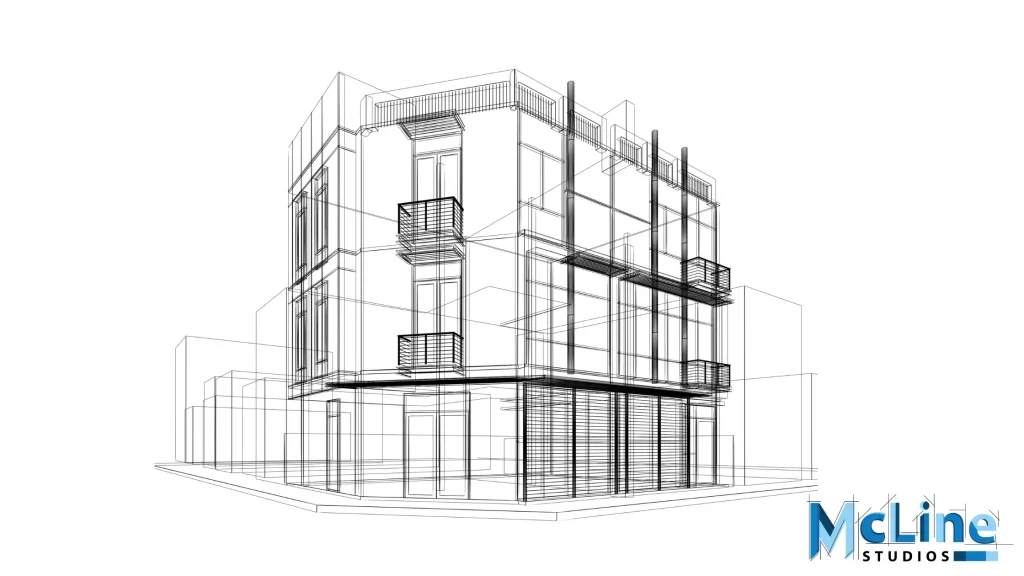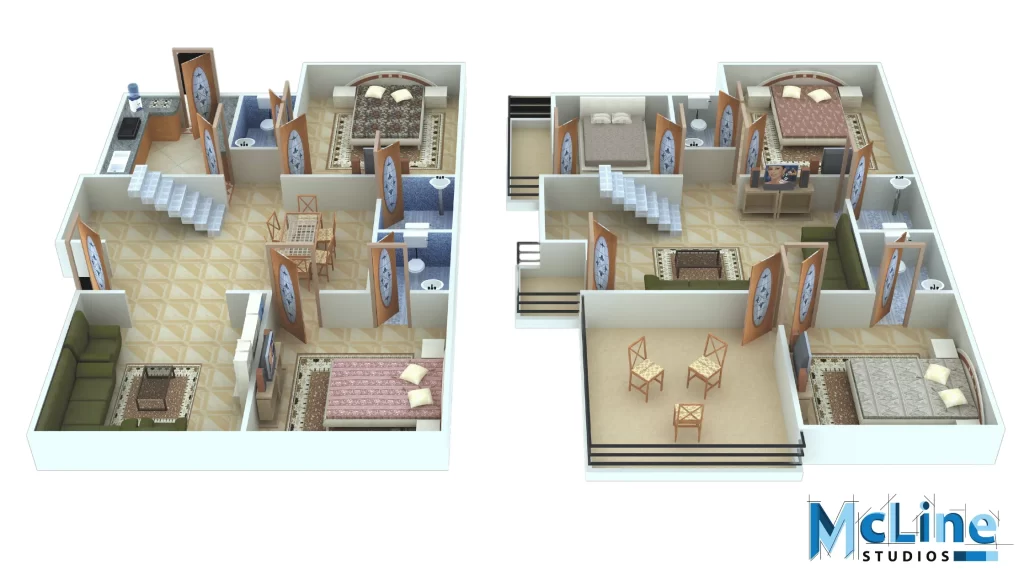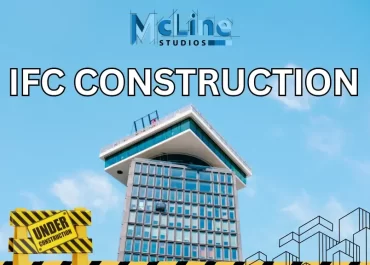In construction, effective communication is essential, and Construction sets play a crucial role in this process. Abbreviations like SD, DD, and CD are commonly used to denote specific stages of the construction project. SD stands for Schematic Design, DD for Design Development, and CD for Construction Documents.
These abbreviations mark significant milestones in the project’s progression, representing the transition from conceptual ideas to tangible construction. The significance of these phases is fundamental for professionals in the construction industry, as they represent key stages in the translation of conceptual ideas into tangible, buildable structures. As we move on to the article, we will explore what these abbreviations mean, their benefits, and their deliverables.
What is Schematic Design (SD) in construction?
Schematic Design (SD) is the initial creative phase of the design process, resulting in conceptual representations that capture the essence of the project. SD serves as the initial creative phase, where architects and designers explore various conceptual ideas for the project. During this stage, rough sketches, diagrams, and conceptual plans are developed to convey the overall design intent.
Schematic Design is about capturing the essence of the project and establishing a general direction. It involves defining spatial relationships, overall aesthetics, and key design elements for shop drawings. The output of the SD phase sets the foundation for subsequent development, providing a roadmap for the detailed work that follows in the Design Development phase.
Benefits of Schematic Design
- Idea Exploration: SD allows designers to explore multiple design concepts and creative possibilities before settling on a specific direction.
- Client Engagement: Preliminary designs from the SD phase are crucial for engaging clients in the design process, gathering feedback, and ensuring that the project aligns with their vision and requirements.
- Feasibility Assessment: SD helps assess the feasibility of design concepts in terms of budget, site constraints, and regulatory requirements before investing significant time and resources.
Deliverables
The key deliverables of schematic design are:
- Conceptual Sketches: Rough drawings and diagrams illustrating design ideas and spatial relationships.
- Massing Models: Basic physical or digital models that help visualize the overall form and scale of the project.
- Preliminary Plans: Basic floor plans and site plans outlining the initial design concepts.

What is Design Development (DD) in construction?
Building upon the concepts established in Schematic Design, the Design Development (DD) phase is where the project takes a more refined shape. In DD, the broad strokes of the initial design are fleshed out, detailing specific elements and addressing any challenges or constraints that may have arisen.
During this phase, architects and engineers collaborate closely to refine the design, ensuring that it aligns with regulatory requirements, budget constraints, and the practical aspects of construction. The goal of Design Development is to produce a comprehensive and coordinated set of drawings and specifications that will serve as the basis for the Construction Documents.
Benefits of Design Development
- Refinement of Design: DD refines the initial design concepts, addressing any challenges or constraints that may have surfaced during the schematic phase. It adds specificity to the design elements.
- Coordination and Integration: The coordination documents in DD ensure that different aspects of the project are integrated seamlessly, minimizing conflicts and coordination issues during construction.
- Cost Estimation: With more detailed information on materials and construction methods, DD allows for more accurate cost estimation, helping clients and project teams stay within budget constraints.
Deliverables
Key deliverables of Design Development are:
- Detailed Drawings: Refined architectural drawings with more precise dimensions, details, and annotations.
- Material Selection: Specifications that detail the specific materials and finishes to be used in the project especially in wall cladding or paneling.
- Coordination Documents: Ensuring that all aspects of the design are coordinated, including structural, mechanical, and electrical elements.

What is Construction Document (CD) in construction?
CD stands for Construction Documents, the comprehensive set of documents that serve as the blueprint for executing a construction project. Think of CDs as the detailed instruction manual that guides contractors, subcontractors, and other professionals in turning the conceptual design into a tangible structure.
Construction Documents include a wide array of information such as architectural drawings, specifications, schedules, and other technical details. This detailed documentation ensures that everyone involved in the project understands their roles and responsibilities, the materials to be used, and the methods employed during construction. Construction documents are essentially the culmination of the design process, representing the finalized vision ready to be brought to life.
Benefits of Construction Documents
- Clarity and Consistency: Construction Documents eliminate ambiguity by clearly articulating the design intent and technical requirements. This promotes a consistent understanding among all project stakeholders.
- Risk Mitigation: With detailed specifications and drawings, potential issues and conflicts are identified and addressed early in the process, reducing the likelihood of costly errors during construction.
- Contractual Basis: Construction Documents form the basis for construction contracts. They define the scope of work, materials to be used, and quality standards, providing a legal framework that protects both the client and the construction team.
Deliverables
The primary deliverables of construction documents include:
- Architectural Drawings: Detailed plans, elevations, sections, and details that outline the spatial arrangement and aesthetic aspects of the project.
- Specifications: A written document specifying the materials, construction methods, quality standards, and other crucial details necessary for the construction team to execute the project accurately.
- Schedules: Timelines and project milestones that help in coordinating different aspects of construction, ensuring a smooth workflow.

Differences Between SD, DD, and CD
| Stage | SD (Schematic Design) | DD (Design Development) | CD (Construction Documents) |
| Purpose | Establishes the overall concept and design intent. | Refines the design, develops details, and addresses technical issues. | Produces detailed drawings and specifications for construction. |
| Level of Details | General layout, basic forms, and conceptual design. | More detailed plans, sections, and elevations. Preliminary specifications may be included. | Highly detailed plans, specifications, and other documents necessary for construction. |
| Client Approval | Client approves the general concept and design direction. | Client reviews and approves the refined design. | Client gives final approval for construction based on detailed documents. |
| Coordination | Limited coordination with consultants and stakeholders. | Coordination with consultants increases. Structural, mechanical, and other systems are considered. | Full coordination with all parties involved. Final checks for conflicts and issues. |
| Drawings | Conceptual drawings and diagrams. | More detailed drawings and specifications. | Comprehensive set of construction drawings and specifications. |
| Timeline | Typically shorter duration compared to later stages. | Longer duration as details are refined. | Longer duration due to the production of detailed construction documents. |
Interpretation
In conclusion, grasping the significance of SD, DD, and CD is pivotal in the construction realm. These phases intricately guide a project from concept to reality, ensuring a systematic and error-minimized process.
For streamlined drafting services tailored to each construction stage, consider partnering with McLine Studios. Our expertise ensures precision in Schematic Design, meticulous planning in Design Development, and comprehensive documentation in Construction Documents. With McLine Studios, your construction project is not just a vision; it’s a crafted reality.




